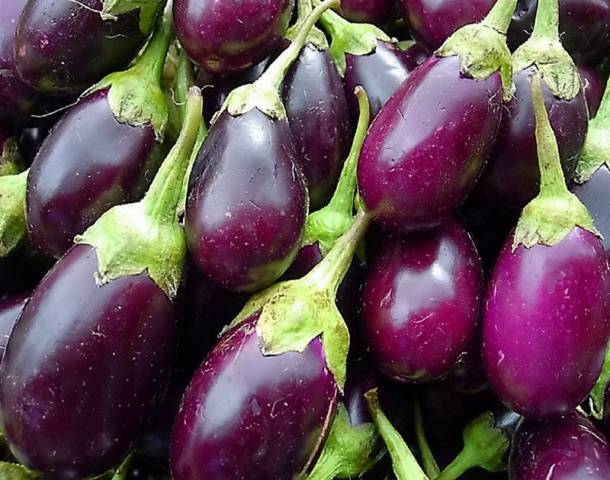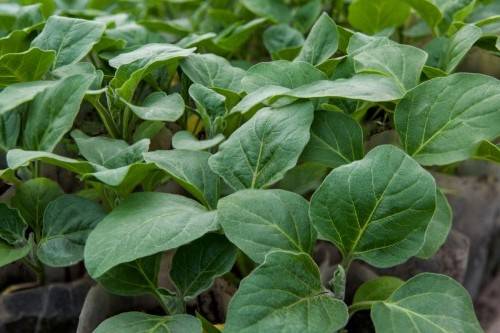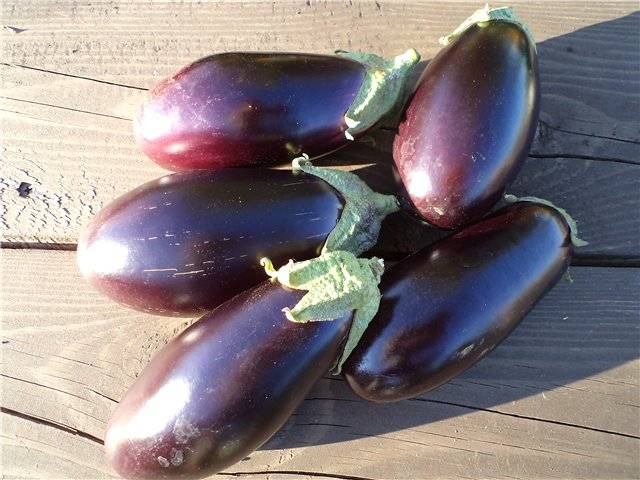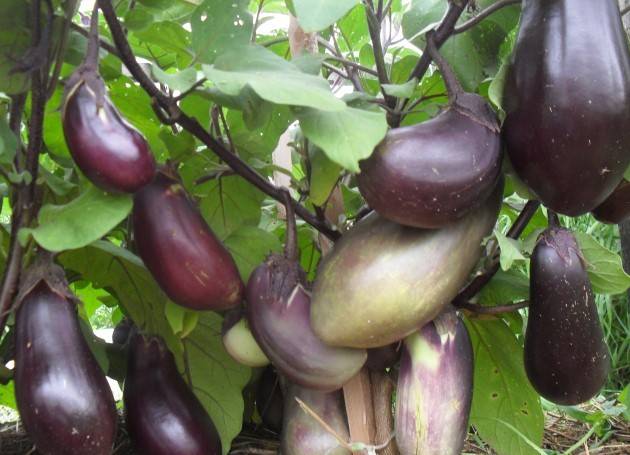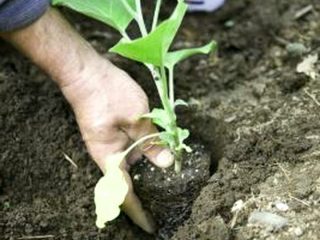Why the variety was called a dwarf becomes clear if you look at the height of the bush, barely reaching forty centimeters.
But why Japanese? This is probably only known to its creator. Especially if you remember that the variety is not even foreign, but belongs to the line of frost-resistant varieties of eggplant "Siberian Garden".
Description of the variety Japanese dwarf
The compactness of the bushes allows them to be planted denser than other types of eggplant. In the amount of five to seven bushes per square meter. The landing pattern is sixty centimeters by forty.
The fruits of the Japanese dwarf variety cannot be called dwarf in any way. These are quite large pear-shaped eggplants, growing up to eighteen centimeters in length and weighing up to three hundred grams.
Moreover, this variety of eggplant is early ripening, the crop can be harvested as early as four months after sowing seeds for seedlings.
The skin of the fruit is thin. The pulp does not contain bitterness, light beige, tender, without voids.
Eggplant is trouble-free in cultivation. Bred for open beds. It responds well to watering and mineral fertilizing. The yield will be higher if you use drugs that accelerate seed germination and increase fruit set.
Agrotechnics
On seedlings, like other eggplants, the Japanese dwarf is planted at the end of March. Seeds treated with a stimulant are planted in pots filled with fertile soil or a specially treated substrate. You can pick up peat tablets specifically for eggplant. Taking into account the required acidity of the substrate from 6.5 to 7.0.
When planting in the ground, eggplant seeds are lightly sprinkled with earth, watered, covered with non-woven material and placed in a warm place. Eggplants are lovers of heat, therefore, for germination of seeds, an air temperature of twenty-five degrees is required. It is necessary to ensure that the soil in the planting pots is always moist, but there is no excess water either. In case of excessive watering, the roots of young plants suffocate without air and rot.
The dried peat is knotted into a lump through which the water passes without lingering. As a result, the plants dry out without getting water. If it happens that the substrate has dried out, the pots must be placed in water for twenty to thirty minutes so that the peat softens and begins to retain moisture again.
After the seventieth day, at the end of May, the Japanese dwarf can be planted in the ground. By that time, return frosts will have ended. Eggplant grows better in the open air, but if the spring has dragged on and the air temperature is still low, it is better to plant it under a film on arcs. With warming, the film can be removed.
Unfortunately, moisture condenses under the film. Increased air humidity often provokes fungal diseases in eggplant. As an alternative to the film, you can use a non-woven fabric that allows water and air to pass through, but retains heat.
During the growing season, eggplant must be fed with potassium and phosphorus. To maximize the provision of eggplant with nutrients, a significant amount of organic matter must be added to the soil even before planting seedlings: humus, compost. After planting seedlings, it is better to mulch the beds. This will help get rid of weeds.
Of all the nightshades, eggplant has the largest leaves. Much more water evaporates from their surface than from tomato or potato leaves. That is why eggplant needs regular and abundant watering.
The fruits are harvested in August - September.Given their high yields, they are most often used for processing for winter harvesting.
The Japanese dwarf variety is often confused with another eggplant variety, the Korean dwarf. They are indeed similar in size to the bush. The photo below is a Korean dwarf.
Most likely, even sellers confuse varieties. It may happen that instead of a Japanese dwarf, a Korean dwarf grows in the garden. This variety is also not bad, you should not be very upset.
Much more, the reputation of any eggplant can be spoiled by the so-called re-grading. A peresort is a different kind of eggplant seeds sold to you by an unscrupulous buyer. Probably, here we also need to say "thank you" that these are eggplant seeds, and not pepper, for example.
Reviews of gardeners
It is because of the re-grading that sometimes you come across such reviews as:
There are also such:
Those who bought real Japanese dwarf seeds leave other reviews.

